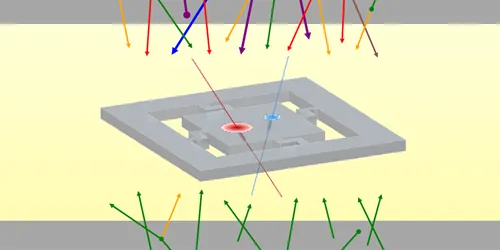
Shielding Superconducting Qubits from Background Radiation: A Pioneering Study
2024-11-12
Author: Wei Ling
Introduction
Researchers have made significant strides in understanding the background radiation that impacts superconducting quantum circuits, a breakthrough that could pave the way for more resilient quantum computing devices. Unlike classical computers, which are susceptible to cosmic rays causing bit flips, superconducting quantum computers face an even greater challenge. A single energetic particle hitting the computer’s substrate can disrupt the delicate quantum states of multiple qubits, leading to a loss of coherence.
Groundbreaking Study
In a groundbreaking study, Joseph Fowler and his team from the National Institute of Standards and Technology (NIST) in Colorado developed a novel detector that mimics a quantum circuit to analyze the ambient background radiation affecting superconducting circuits. This initiative aimed to quantify the radiation spectrum in their operating environment, providing insights into how to mitigate its adverse effects.
Vulnerability of Superconducting Quantum Circuits
Superconducting quantum circuits are typically composed of films just a few hundred nanometers thick, making them particularly vulnerable targets for high-energy photons and particles. While these high-energy impacts are more likely to occur on the denser substrate beneath the superconducting layer, they can generate secondary particles that reach the qubits and disrupt their coherence by breaking the superconducting electron pairs.
Modeling Radiation Impact
To assess this radiation impact, Fowler and his colleagues created a model to predict how cosmic and terrestrial radiation sources would influence a quantum circuit. They validated their predictions through experiments using thermal kinetic-inductance detectors (TKIDs) which are tailored to gauge the energy of incoming particles by measuring changes in inductance caused by the disruption of superconducting states.
Fabrication and Findings
The researchers fabricated TKIDs using substrates akin to those in quantum circuits, allowing them to accurately evaluate the rate of energy deposition in these devices. Their findings closely aligned with the theoretical model, indicating a promising direction for developing quantum computing systems with improved resistance to background radiation.
Future Directions
This validated model is set to serve as a critical roadmap for scientists engineering future quantum computers, potentially leading to breakthroughs in quantum technology that harness the power of qubits while minimizing the pitfalls associated with ambient radiation.
Conclusion
Stay tuned as researchers continue to uncover methodologies that could transform our approach to quantum computing, making it more robust against the unseen forces of nature! This revolutionary research, published in the reputable journal *PRX Quantum*, demonstrates the dual importance of fundamental science and practical applications in the evolution of technology. As the quest for reliable quantum computers continues, understanding and mitigating the effects of background radiation will undoubtedly play a pivotal role in the ultimate success of quantum computing endeavors.


 Brasil (PT)
Brasil (PT)
 Canada (EN)
Canada (EN)
 Chile (ES)
Chile (ES)
 Česko (CS)
Česko (CS)
 대한민국 (KO)
대한민국 (KO)
 España (ES)
España (ES)
 France (FR)
France (FR)
 Hong Kong (EN)
Hong Kong (EN)
 Italia (IT)
Italia (IT)
 日本 (JA)
日本 (JA)
 Magyarország (HU)
Magyarország (HU)
 Norge (NO)
Norge (NO)
 Polska (PL)
Polska (PL)
 Schweiz (DE)
Schweiz (DE)
 Singapore (EN)
Singapore (EN)
 Sverige (SV)
Sverige (SV)
 Suomi (FI)
Suomi (FI)
 Türkiye (TR)
Türkiye (TR)
 الإمارات العربية المتحدة (AR)
الإمارات العربية المتحدة (AR)